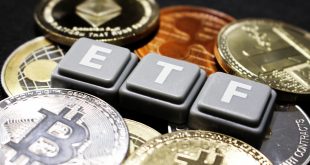Coincident measures of real growth continue to slowly march lower on a trending basis. Leading indicators of real growth show no signs of an imminent inflection higher in growth. Jerome Powell was extremely hawkish after raising interest rates 0.25%.
The yield curve flattened massively in response to slowing growth and an overly hawkish Federal Reserve. Risk assets like equities are too optimistic about the cyclical risks. In the context of a balanced portfolio, It would be useful to have a look to trim risk exposure in favor of defensive bond or equity exposure.
Frontal collision between two trucks
While the short-term market moves remain focused on the constant Russia-Ukraine headlines, the economic cycle continues to develop.
The Federal Reserve raised interest rates 0.25% and signaled at least six more rate hikes are on the way, plus a stated intention of reducing the size of the Fed balance sheet.
Before recapping the FOMC, market participants have to remain focused on cyclical trends by studying the recent coincident data. Retail sales, in nominal terms, posted a sequential decline in growth for the February reporting period, falling to 10.4% from 12.0% in January.
Retail Sales Growth
Most of this growth, however, is price and not quantity. Adjusting for inflation provides a reading on “real consumption,” and we can see that real consumption growth, according to the Census Bureau retail sales data, declined to 2.3% in February.
Over the last three months, the trending average of real consumption growth has been just 1.4%, far from a robust rate of consumption.
Industrial production, another coincident measure of real growth, showed a sequential improvement in growth, rising to 5.9% in February from 5.4% in January. Coincident data defines the trend. Leading indicators tell us where the trend is heading. Coincident data includes reliable measures of consumption, income, production, and employment.
It is useful to draw the most from early February coincident data, including real aggregate earnings, industrial production, nonfarm payrolls, and real retail sales. Measuring coincident data in a composite form with data from all four corners of the economy allows us to measure the overall trend without putting a bias towards any one segment.
Overall, the economic growth rate remains in a declining trend, inching closer to recessionary conditions, although not yet signaling that economic contraction is an imminent risk.
Leading indicators of real growth show a clear path toward lower real growth in the months ahead, which may bring more concrete evidence of recessionary conditions.
Action in the Treasury bond market, particularly after the FOMC meeting and press conference, confirmed the worsening growth trends and also confirmed the potential fears of a coming recession, but not in the immediate term.
Jerome Powell raised interest rates 0.25%, which is a relatively mild policy move in the context of high near-term inflation, but his rhetoric during the press conference was fiercely hawkish.
Chairman Powell made statements such as “the labour market is so tight it’s unhealthy” and “we’d like to slow demand.
Powell also claimed that the Federal Reserve has the intention to raise interest rates above the “neutral rate,” which is the estimated rate that maintains full employment. This extremely hawkish comment echoes the desire to “slow demand.”
Slowing demand means slowing growth, something that’s already occurring without the help of the Federal Reserve, but now the Fed wants to help in the effort to stunt real growth.
The yield curve flattened dramatically after the announcement and press conference, which is the logical response to tighter monetary policy plus slower economic growth.
The spread between the 10YR and 5YR Treasury rate briefly inverted during the press conference and closed at roughly 0.01%.
The spread between the 30YR and 2YR Treasury rates flattened more than 15bps during the meeting before steepening slightly, closing at a new cyclical low of just 0.50%.
The flattening of the Treasury curve across several points is highly consistent with an outlook of tighter monetary policy but slower yet non-recessionary growth.
The US economy is not yet at recession’s door, so it’s not yet appropriate for major parts of the spot Treasury curve to fully invert. Recessionary conditions are inching closer, so a continued flattening of the curve is the logical market reaction.
However, given the US economy is decelerating and forward leading indicators imply that growth will continue on this downward path, the intention of the Federal Reserve to raise interest rates seven more times this year is more than likely to tip the recessionary scales.
A fancy way that interest rate traders bet on the yield curve is called “forward” curves. The chart below shows the 10YR minus 2YR spread, 1YR forward. What this means is, what will the 10YR minus 2YR spread be, one year from today.
So essentially, traders are betting that 1YR from today, the 10YR minus 2YR spread will be -0.23%. The Fed will invert the Treasury curve within a year given the stated path of interest rate hikes, bringing about recessionary conditions.
The Treasury bond market is not saying a recession is here, but it’s saying that a recession is likely coming in the not-too-distant future given the current direction of growth, the leading indicators of future growth, and the extremely hawkish rate-hiking path outlined by the Federal Reserve.
This bond market framing in that a recession is not an imminent risk, but that risk will be present in the coming months if the economic data trends in the direction outlined by the leading indicators.
To start, this means that risk assets are far too comfortable with the economic risks on the horizon. The equity market does not see recession risk until it becomes glaringly obvious, but the signs are building. Certain parts of the equity market have seen 50%-plus drawdowns, but overall indexes remain resilient. This resilience will start to break down under worsening economic conditions and tighter financial conditions.
Markets today are near the peak of interest rate pricing. Currently, the bond market estimates 6-7 more rate hikes this year and a fed funds rate of 2.4% by December 2023. I think that pricing is too aggressive and will not be satisfied.
It is appropriate to reduce risk asset exposure and continue building defensive positions in US Treasury bonds or parts of the equity market that are better positioned for declining interest rates within the context of a balanced portfolio or your personal asset allocations strategy.
The short-term path will continue to be highly volatile, and swings based on Russia-Ukraine events should be expected, but the path of the economy is highly inconsistent with the current tightening expectations of the Federal Reserve, and a collision is on the 6-12 month horizon.
As an investor, you want to know where to move your money and when to move it. This question depends on cyclical inflection points.

 Noor Trends News, Technical Analysis, Educational Tools and Recommendations
Noor Trends News, Technical Analysis, Educational Tools and Recommendations




